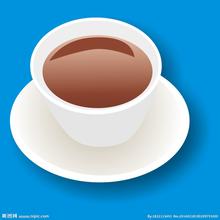Ethiopian coffee beans
General requirement: the moisture content of sun-cured coffee beans should not exceed 11.5% of the weight, and at least 85% of the beans should be kept above 14 mesh after screening. (that's why Egyptian beans don't look good: more than 14 eyes means 14Magi, 15je, 16je, 17jue, 18, etc. mixed together, beans must be uneven.)
The grading of Parchment Coffee: 1, 2, 3, 4, 5, 6, 7, 7, 9, UG (undergrade). Attention! This is completely different from what Shirley Grade-2, Harald Grade-3, this is a domestic grading logo, used for auction, not export grade naming. There are two major factors for evaluating the above grades: Raw Value (physical factor) accounts for 40 points, Cup Quality Value (cup factor) accounts for 60 points, and the total score is 100 points.
Physical factors include: shortcomings 20, shape 10, color 5, odor 5
Cup factors include: clarity 15, acidity 15, taste 15, flavor 15
Finally, it is graded according to the total score.
And to be rated as a boutique, there is another round of finals, that is, another round of evaluation, which is rated as 1Magne2 and 3, and the evaluation is a cup test evaluation, and the evaluation factors are basically the same as those of SCAA and will not be detailed. After the quality evaluation, there is another name, so don't say it, it will be very messy. (10,000 words are omitted here)
Note: all the above cups will be baked and tested after the shell of the sample is removed.
After the exporter auctions the beans back, process 9), mixing occurs at this step, which has two meanings: a) mixing beans from different hills, and b) mixing beans with different Parchment coffee grades. The key part that affects quality is in b). We have just introduced the grades of 1 to 9 Parchment UG. Let's take Sheffield as an example. The exporter: handsome guy, there is an order for 20 tons of Chefe Grade-2. He has sold back more than 20 tons of Sheffield from the auction house. In most cases, the goods he auctioned are sold in batches, because a mountain top does not happen to have as much coffee as 20 tons. The auction in several batches means that the small production area (hilltop) is different from the Parchment grade. For example, if the handsome guy is shot in four batches, then these four batches will be
A production area 5 tons (grade: 1); 25%
B production area 2 tons (grade: 2); 10%
C production area 10 tons (grade: 3); 50%
D production area 3 tons (grade: 4), accounting for 15%
Then the handsome guy took the Parchment coffee to the processing plant to deal with the export of 20 tons of raw beans. Of course, he had to do the export grade certification before the export, and the official Shifei Grade-2 certificate was issued. Do you see the key?
Let's change it to another exporter: fierce Man, who also has an order of 20 tons. He got back 4 batches of parchment coffee from the auction house:
E production area 1 ton (level: 1); 5%
F production area 1 ton (grade: 2); 5%
G production area 10 tons (grade: 3), accounting for 50%
H production area 8 tons (grade: 4), accounting for 40%
Similarly, the fierce man issued the certificate of Shaffy Grade-2 in the official organization.
Everyone in the world can see that although everyone is called Xuefei-2, the quality of the goods made by handsome men is certainly better than that of fierce men, and much better. Of course, I didn't say that the fierce man is a profiteer, because the export price of the fierce man is lower than that of the handsome guy. Ohh! Finally, everyone thoroughly understood the truth of goods for every penny. The above operations are also applied to other Egyptian beans, such as Sidamo, Gemma, Lachamdi and so on. Summary: 1) in addition to planting, the key factors affecting quality are process 4) and process 9)
2) process 9) is very important. I have visited the processing plant, and the goods that feel well managed are good goods. For example, measures such as workers' regular rest can effectively improve the quality of picking beans.
3) every penny, as an importer, I can bargain, but process 9) this step is beyond the importer's control, and the exporter won't tell you how they mix. The importer can find an exporter who is serious about making coffee.
4) Egypt is divided into Parchment grade and export grade, the two are different but related.
5) the grading of Egyptian beans is the most systematic grading standard I know in African countries.

Important Notice :
前街咖啡 FrontStreet Coffee has moved to new addredd:
FrontStreet Coffee Address: 315,Donghua East Road,GuangZhou
Tel:020 38364473
- Prev

Introduction to the origin of Burundian coffee flavor and taste
Due to ethnic divisions, the chaos of Burundian coffee has been going on for a long time, with a large number of raw beans mixed with the old and new, making this coffee unsuitable for grading. This coffee is rough but mild, and has characteristics similar to Kenyan coffee. The flavor is sweet and fruity, with a slightly spicy finish. Dry aroma (1-5): not suitable for wet aroma
- Next

Introduction of raw beans in Kenyan coffee farm
Kenya's climatic and geographical conditions provide unique conditions for the growth of high-quality coffee beans, which are located in eastern Africa, the equator runs through the middle, and the East African Rift Valley runs through the north and south. It is bordered by Somalia to the east, Tanzania to the south, Uganda to the west, Ethiopia and Sudan to the north, and the Indian Ocean to the southeast. The coastline is 536 km long. There are many plateaus in the territory, with an average elevation of 1500 meters.
Related
- Does Rose Summer choose Blue, Green or Red? Detailed explanation of Rose Summer Coffee plots and Classification in Panamanian Jade Manor
- What is the difference between the origin, producing area, processing plant, cooperative and manor of coffee beans?
- How fine does the espresso powder fit? how to grind the espresso?
- Sca coffee roasting degree color card coffee roasting degree 8 roasting color values what do you mean?
- The practice of lattes: how to make lattes at home
- Introduction to Indonesian Fine Coffee beans-- Java Coffee producing area of Indonesian Arabica Coffee
- How much will the flavor of light and medium roasted rose summer be expressed? What baking level is rose summer suitable for?
- Introduction to the characteristics of washing, sun-drying or wet-planing coffee commonly used in Mantenin, Indonesia
- Price characteristics of Arabica Coffee Bean Starbucks introduction to Manning Coffee Bean Taste producing area Variety Manor
- What is the authentic Yega flavor? What are the flavor characteristics of the really excellent Yejasuffi coffee beans?

